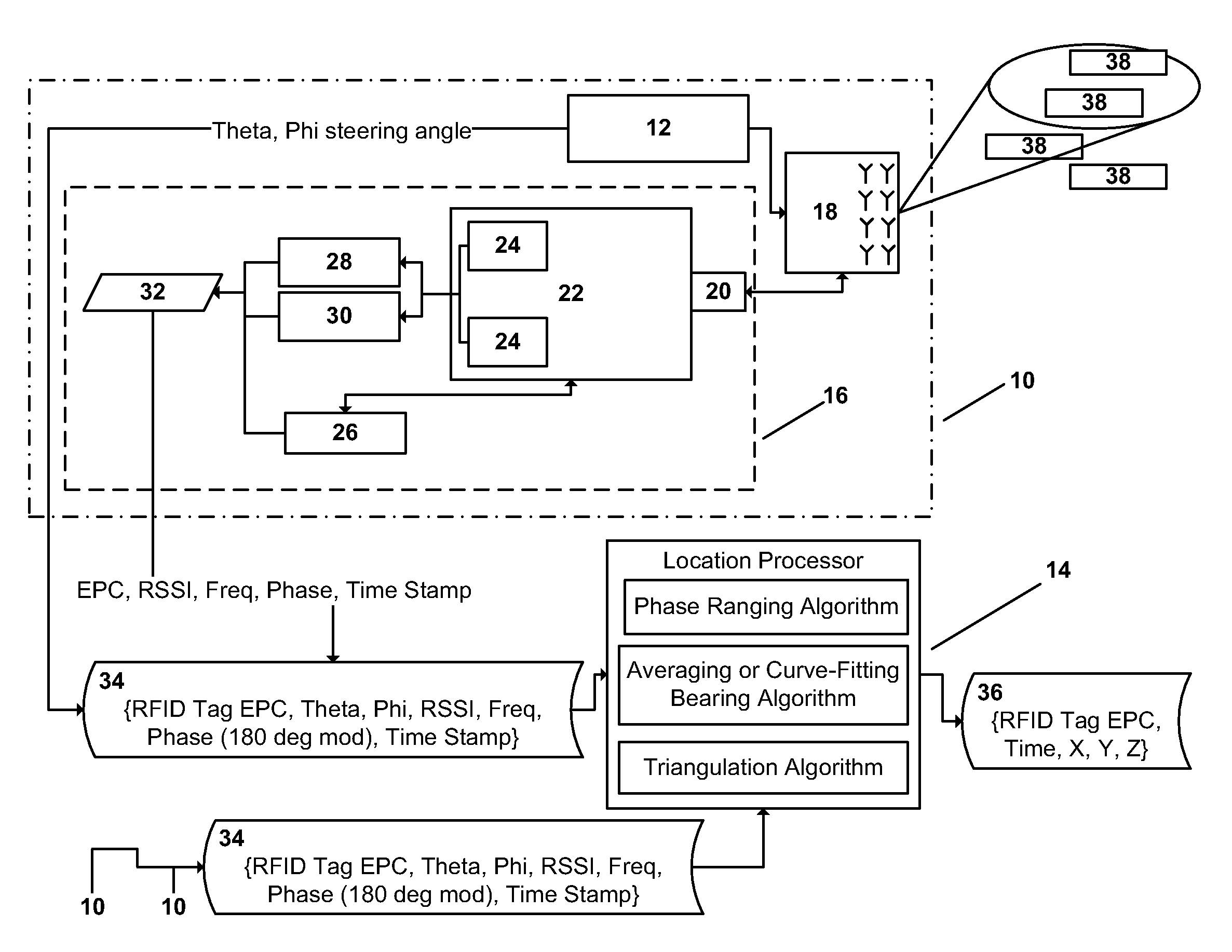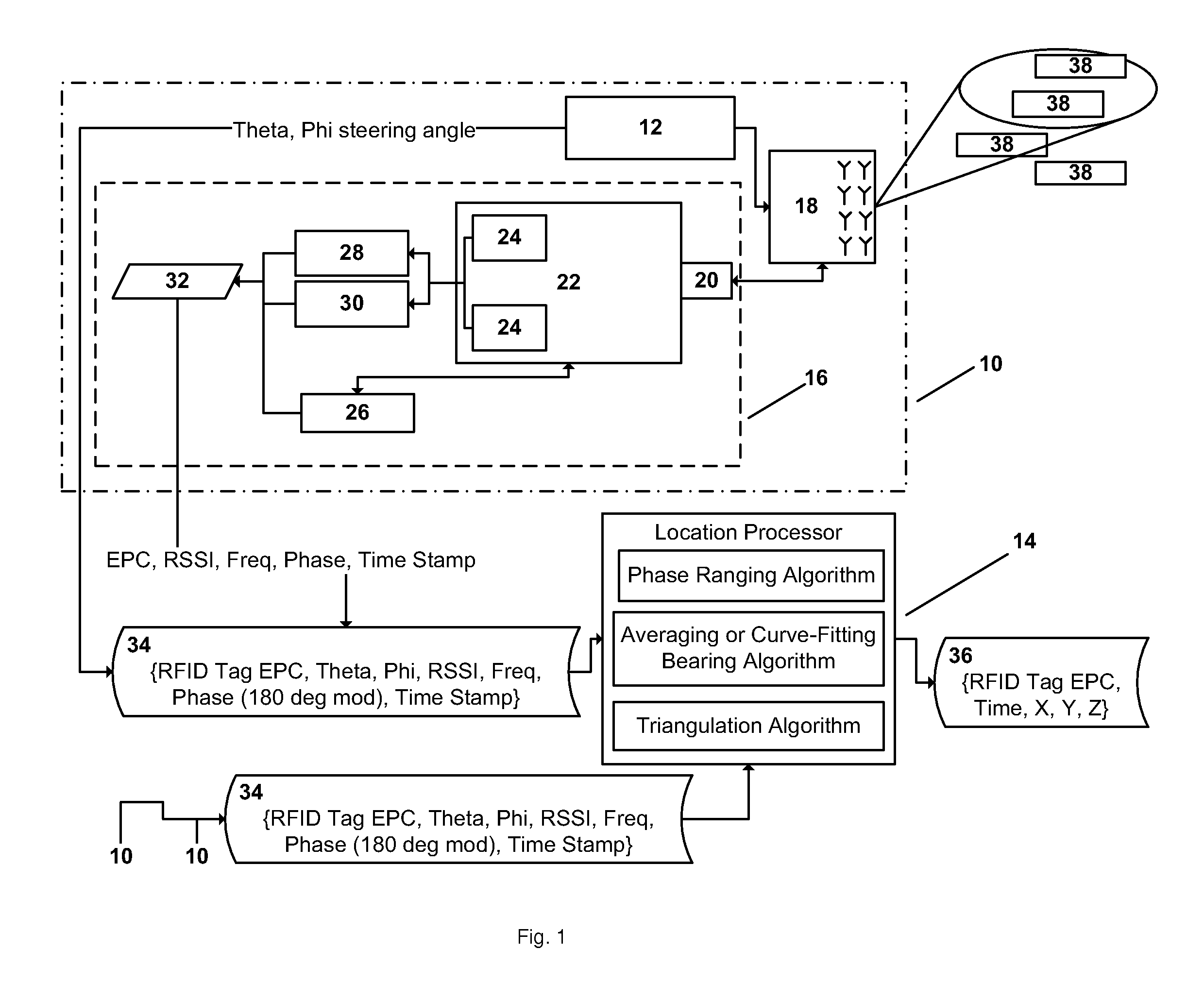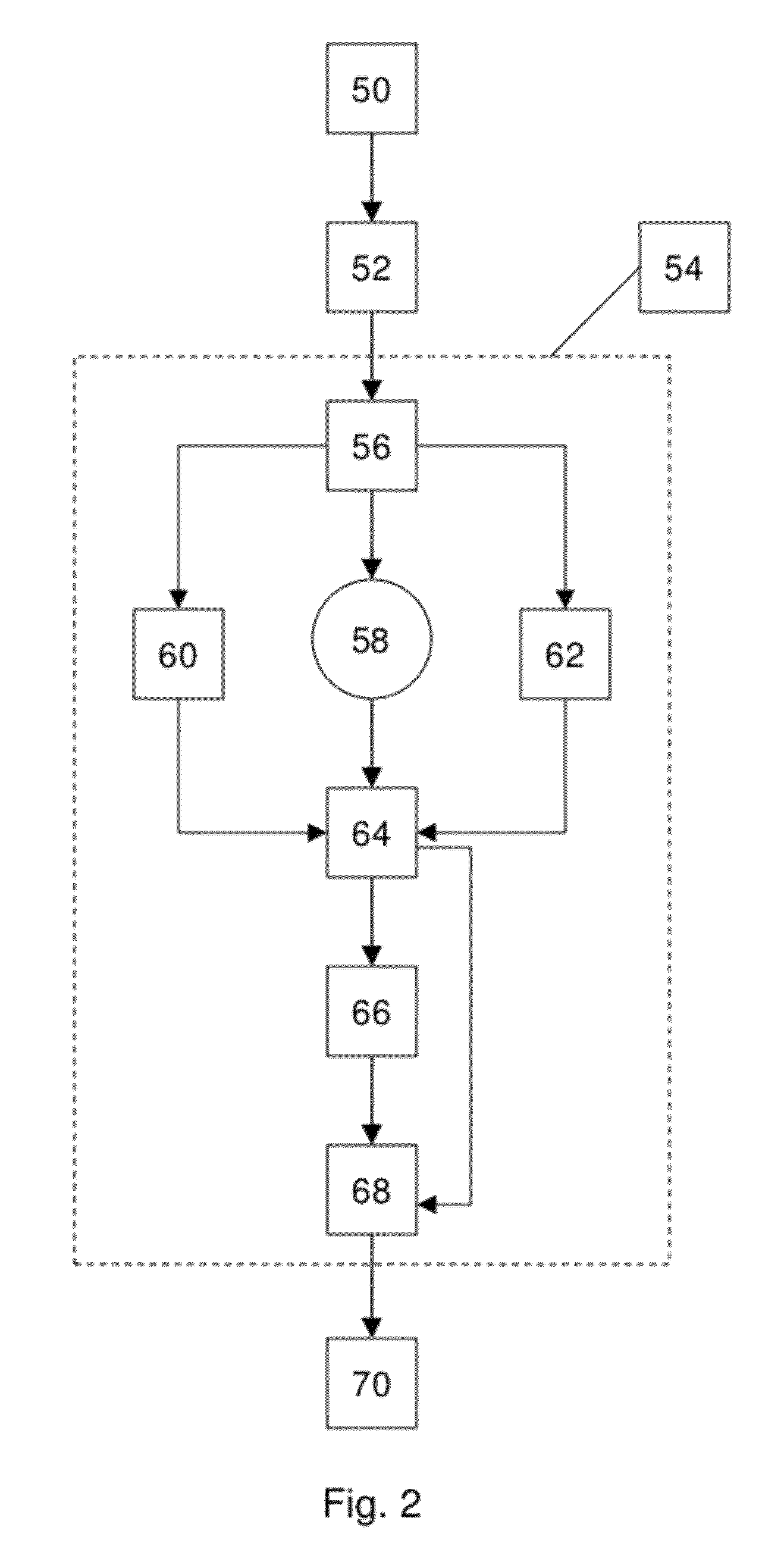Methods for noise validated phase ranging RFID location
a phase ranging and noise validation technology, applied in the field of touch free identification, location and/or tracking systems, can solve the problems of inability to enable the three-dimensional location of the target rfid within the volume, inability to further input, and inability to inhibit the intersection triangulation of interrogation signal beams, etc. cost, installation and maintenance, and the effect of multiple sasl hardwar
- Summary
- Abstract
- Description
- Claims
- Application Information
AI Technical Summary
Benefits of technology
Problems solved by technology
Method used
Image
Examples
Embodiment Construction
[0019]Through investigation of the operational parameters of RFID object location systems, the inventors have recognized that analysis of the phase of the received signal from a target RFID over multiple interrogation frequencies can provide ranging of the target RFID distance along the interrogation signal beam with significant precision.
[0020]Phase ranging as used herein is the procedure of calculating the distance a tag is from the RFID location system antenna along the interrogation signal beam, based upon the phase readings included in the data set(s) obtained for each frequency at the same steering angle.
[0021]FIG. 1 demonstrates an exemplary RFID location system with signal phase detection and phase ranging capability. The intelligent steerable phased array antenna module 10 is demonstrated with a beam steering unit 12 under the control of a location processor 14. An RFID reader module 16 directs an interrogation signal to and receives corresponding signals from the steerable...
PUM
 Login to View More
Login to View More Abstract
Description
Claims
Application Information
 Login to View More
Login to View More - R&D
- Intellectual Property
- Life Sciences
- Materials
- Tech Scout
- Unparalleled Data Quality
- Higher Quality Content
- 60% Fewer Hallucinations
Browse by: Latest US Patents, China's latest patents, Technical Efficacy Thesaurus, Application Domain, Technology Topic, Popular Technical Reports.
© 2025 PatSnap. All rights reserved.Legal|Privacy policy|Modern Slavery Act Transparency Statement|Sitemap|About US| Contact US: help@patsnap.com



